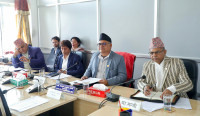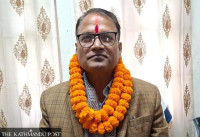National
Archaelogists start excavation works at Tilaurakot, Kapilvastu
A team of archaeologists has initiated an excavation at Tilaurakot, Kapilvastu, with an objective to include Tilaurakot in the list of World Heritage Sites. Tilaurakot is an ancient Shakyan city of Kapilvastu where Siddhartha Gautam spent 29 years of his lifetime.
Manoj Paudel
A team of archaeologists has initiated an excavation at Tilaurakot, Kapilvastu, with an objective to include Tilaurakot in the list of World Heritage Sites. Tilaurakot is an ancient Shakyan city of Kapilvastu where Siddhartha Gautam spent 29 years of his lifetime.
Excavation works have been carried out in three different places of Tilaurakot. Archaeologists said they will complete the work on February 28. “We will carry out an intensive excavation in the north-western part of Samayamai temple,” archaeologists said.
They have also started fresh excavation at Kanthak Stup. Japanese national Nobuo Kasai has provided a financial support of Rs 10 million for the project.
Archaeologists said they will carry out a geo-physical survey, drone photography, topography, field walking, socio-economy and visitor survey during the excavation. “This excavation will shed light to the cultural importance of Tilaurakot. The ancient city will soon be listed in the World Heritage List,” said senior archaeologist Kosh Prasad Acharya.
Vice chairman of the Lumbini Development Trust (LDT) Bhikshu Maitreya said the trust has also started development works in Tilaurakot. “The excavation will help find more details about the historical city of Tilaurakot,” he said.
The excavation team comprises 10 archaeologists from Durham University of the United Kingdom and La Trobe University of Australia as well as 20 experts from the Department of Archaeology and LDT. Fifteen students of Culture and Archaeology from the Tribhuvan University are also involved in the excavation.
During an excavation in Tilaurakot in 2015, archaeologists had recovered 494 ancient “punch mark” coins in an earthen pot. In 2016, archaeologists had found the remnants of houses, roads, walls and wells after three years of digging.




 8.12°C Kathmandu
8.12°C Kathmandu















